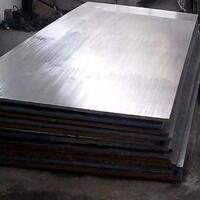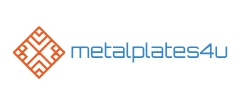1. Introduction
In the past 48 hours, global architecture and construction sectors have seen renewed interest in sustainable façade systems following the unveiling of a new eco-district in Copenhagen featuring extensive use of zinc clad roofs and corten steel facades. This spotlight underscores the growing relevance of metal clad solutions in modern design—blending durability, aesthetics, and environmental performance.

Metal clad—a term encompassing a wide array of composite materials and architectural finishes—has become integral across industries, from residential exteriors to high-performance industrial piping. But what exactly does ‘metal clad’ mean, and why is it so widely adopted?
2. Understanding Metal Clad: Definition and Meaning
The term ‘metal clad‘ (or ‘metalclad’) refers to materials composed of two or more bonded metal layers, where a base metal is covered—or ‘clad’—with a different, often more corrosion-resistant or aesthetically refined metal. This process enhances mechanical properties, longevity, and visual appeal without the full cost of using solid premium metals.
Clad metal meaning centers on synergy: combining strength from structural substrates like carbon steel with surface benefits from metals like copper, zinc, titanium, or stainless steel. Common configurations include aluminum clad steel, stainless clad aluminum, and copper nickel clad composites.
3. Types and Materials of Clad Metals
3.1. Structural and Architectural Clad Metals
Architects and builders frequently specify clad metals for exterior applications due to their resilience and design flexibility. Popular choices include:

- Corten steel plate for weathering facades that develop a rust-like patina
- Zinc metal siding and zinc clad dormer elements for low-maintenance elegance
- Copper siding and standing seam facade systems offering timeless aesthetics
- Aluminum clad sheet (including 6061 T6 aluminum plate and 5052 aluminum plate) for lightweight yet robust cladding
- Colorbond standing seam and PAC CLAD HWP panels for commercial roofing
These materials are often fabricated into metal clad wall panels, vertical standing seam metal siding, or corrugated steel facade systems that define the character of a metal clad building or metal clad house.
3.2. Industrial and Electrical Clad Metals
Beyond architecture, clad metals serve critical roles in engineering and infrastructure:
- Metal clad electrical wire (e.g., aluminum clad wire, CU clad wire) provides enhanced conductivity and shielding
- Aluminum clad pipe insulation improves thermal efficiency in HVAC systems
- Alloy clad variants like 7075 T6 clad or 2024 T3 clad are used in aerospace for strength-to-weight optimization
- Stainless steel plate grades (e.g., 316L SS plate, 304L stainless steel plate) are often clad for chemical resistance in reactors or pipelines
Processes like electroplating, chromium electroplating, and electroless nickel deposition further refine surface properties for specialized environments.

4. Applications in Construction and Design
4.1. Exterior Cladding Systems
Modern metal clad houses increasingly feature corten steel siding, whose natural oxidation eliminates the need for painting. While corten siding cost remains higher than standard options, its lifecycle value justifies investment. Similarly, zinc clad roof systems offer 80+ years of service life with minimal upkeep.
Standing seam siding—particularly PAC CLAD standing seam roof panels and colorbond variants—delivers clean lines and superior water shedding. These systems integrate seamlessly with PAC CLAD coping and column covers for cohesive commercial aesthetics.
For retrofits or sheds, exterior corrugated metal siding and metal weatherboard provide economical, durable solutions. Meanwhile, perforated plate and diamond plate steel sheets add texture and slip resistance to walkways or accent features.
4.2. Material Specifications and Availability
Professionals sourcing materials often search for ‘steel plate near me’ or ‘aluminum sheet for sale’ to fulfill project needs. Common stock includes:
- Mild steel plate, boiler plate steel, and thick steel plate in thicknesses like 1/8 inch steel plate or 3/16 metal plate
- Stainless steel diamond plate and aluminum diamond tread plate for industrial flooring
- ASTM A387 alloy plate and Inconel 625 plate for high-temperature applications
- Brass plates for engraving and metal nameplates in signage
Prices vary by grade, thickness, and finish—with 316 stainless steel plate price reflecting its marine-grade corrosion resistance.
5. Emerging Trends and Sustainability
The shift toward circular design has elevated interest in recyclable clad systems. Titanium clad and inconel weld overlay technologies now enable reuse in extreme environments, while zinc and nickel alloy coatings extend service life without toxic emissions.
Moreover, digital fabrication—such as precision metal sheet cutting—allows custom patterns in checker plate metal sheet or alloy checker plate, merging function with artistry in façades and interiors.
6. Conclusion
From the sleek lines of a steel clad inc commercial tower to the rustic charm of a corten steel facade on a rural home, metal clad continues to redefine boundaries across disciplines. Whether as clad steel structural elements, insulated aluminum clad pipes, or decorative stainless metal sheet accents, these composites offer unmatched versatility. As innovation in alloy development and sustainable manufacturing accelerates, metal clad remains at the forefront of resilient, beautiful, and efficient design.
Our Website founded on October 17, 2012, is a high-tech enterprise committed to the research and development, production, processing, sales and technical services of ceramic relative materials such as What. Our products includes but not limited to Boron Carbide Ceramic Products, Boron Nitride Ceramic Products, Silicon Carbide Ceramic Products, Silicon Nitride Ceramic Products, Zirconium Dioxide Ceramic Products, etc. If you are interested, please feel free to contact us.
